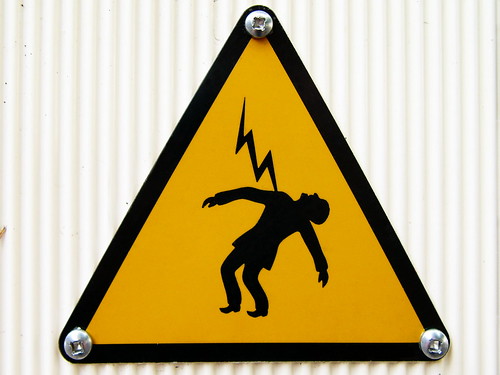By: Dr. Ken Broda Bahm –
One stereotype of the litigious American society suggests that jurors are willing to hold manufacturers and sellers responsible for even the most obvious product dangers: a ladder that allows its user to fall, or a cup of coffee that turns out to be hot. While anecdotes abound — some true, and some false — our experience is that product danger alone rarely drives a verdict. Instead, jurors need to see something else in order to generate sufficient anger to deliver any sizeable verdict against the company. That ‘something else’ can be boiled down to one word: dishonesty. Jurors know that products are dangerous. They have no trouble placing personal responsibility on adults who knowingly use dangerous products. What they are less able to abide is incomplete information. Whether the company is failing to investigate, providing inadequate or false warnings, working around regulations, or simply withholding information, the jury is less willing to say “buyer and user beware” and more willing to put responsibility on manufacturers and sellers.
With 10 of the top 50 verdicts of last year coming from defective product suits, we do know that jurors are willing to hold manufacturers responsible. At the same time, the important ingredients that drive those damages are often found in the company’s behavior rather than in the product itself. A good example can be found in attitudes and behaviors surrounding tobacco use. Based on the results of a pair of studies, the public is more likely to reject a ‘deceptive’ product than it is to reject a merely ‘dangerous’ product.
The first study, (Mazanov & Byrne, 2007), looking at the knowledge and beliefs of young Australians, found that smokers were actually significantly more aware of the risks of smoking than non-smokers. In that study, a greater awareness of danger didn’t result less use of the product. The second study, (Klesjes et al., 2009), found that what did in fact differentiate smokers from non-smokers was a belief that the company was misleading consumers. If study participants felt that tobacco companies had lied about the risks, that was a strong predictor that the individual was a non-smoker. In other words, while smokers may feel that they have an honest appreciation of the dangers of smoking, non-smokers believe that manufacturers are distorting or concealing information about those risks.
There is a parallel in tobacco litigation as well. The product has been known to be deadly for decades, yet tobacco litigation only became viable in the courtroom when attorneys were able to show that the companies had lied about the dangers and manipulated the addictiveness of the products.
One research study also found that deception matters more than danger in the preliminary results of an on-going national study. A consulting group recruited 3,718 respondents to participate in an on-line study, reacting to 40 minutes of summary argument from both sides of a products liability case. The case involved a plaintiff’s claim of injury tied to a product that was redesigned in a way that arguably increased its danger. Among other things, they asked the mock jurors for a verdict as well as an open-ended reason for their decision. After analyzing the content of the responses, they found that comments relating to the danger of the product itself were not nearly as prevalent as comments relating to various forms of the company’s deception. Of the reasons given by those favoring the Plaintiff, product dishonesty was mentioned eight times more often than product danger.
There is a clear take-away for those who defend their products in litigation. Your goal is to fully steward your product, and that means not only making it as safe as possible, but also making sure that your communication about the product — with sellers, with consumers, and with the government –is as direct, complete,and honest as possible.
 Klesges RC, Sherrill-Mittleman DA, Debon M, Talcott GW, & Vanecek RJ (2009). Do we believe the tobacco industry lied to us? Association with smoking behavior in a military population. Health education research, 24(6), 909-21 PMID: 19528314
Klesges RC, Sherrill-Mittleman DA, Debon M, Talcott GW, & Vanecek RJ (2009). Do we believe the tobacco industry lied to us? Association with smoking behavior in a military population. Health education research, 24(6), 909-21 PMID: 19528314
Mazanov, Jason & Byrne, Don (2007). Changes in adolescent smoking behaviour and knowledge of health consequences of smoking Australian Journal of Psychology, 59 (3), 176-180
Picture Credit: Frederic Bisson (zigazou76), Flickr Creative Commons
